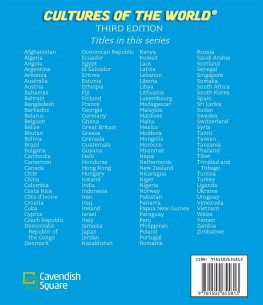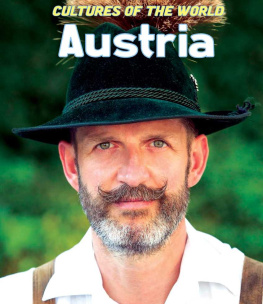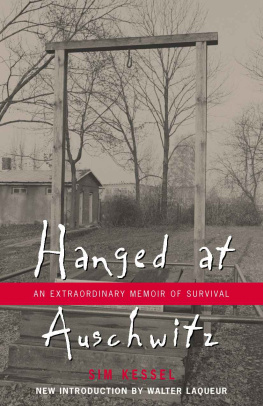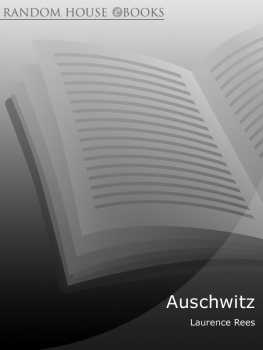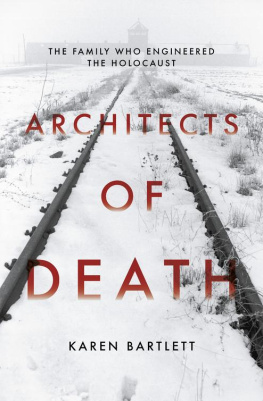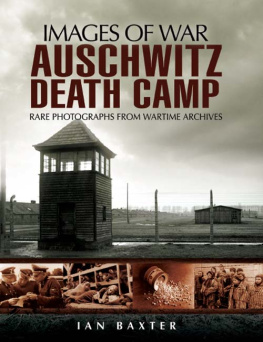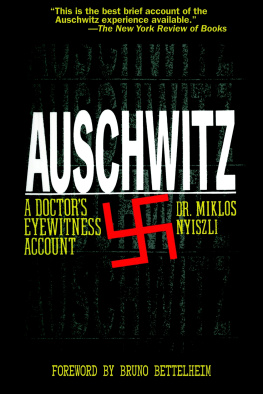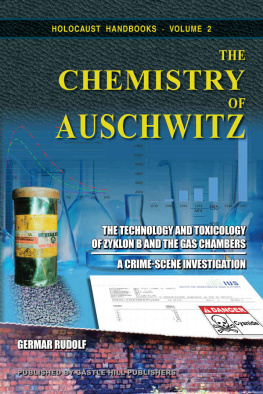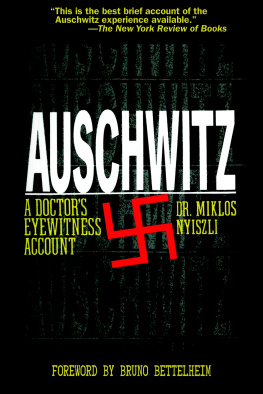Sean Sheehan - Auschwitz
Here you can read online Sean Sheehan - Auschwitz full text of the book (entire story) in english for free. Download pdf and epub, get meaning, cover and reviews about this ebook. year: 2010, publisher: Encyclopaedia Britannica;Britannica Digital Learning, genre: Politics. Description of the work, (preface) as well as reviews are available. Best literature library LitArk.com created for fans of good reading and offers a wide selection of genres:
Romance novel
Science fiction
Adventure
Detective
Science
History
Home and family
Prose
Art
Politics
Computer
Non-fiction
Religion
Business
Children
Humor
Choose a favorite category and find really read worthwhile books. Enjoy immersion in the world of imagination, feel the emotions of the characters or learn something new for yourself, make an fascinating discovery.

- Book:Auschwitz
- Author:
- Publisher:Encyclopaedia Britannica;Britannica Digital Learning
- Genre:
- Year:2010
- Rating:5 / 5
- Favourites:Add to favourites
- Your mark:
- 100
- 1
- 2
- 3
- 4
- 5
Auschwitz: summary, description and annotation
We offer to read an annotation, description, summary or preface (depends on what the author of the book "Auschwitz" wrote himself). If you haven't found the necessary information about the book — write in the comments, we will try to find it.
Auschwitz examines the history of the infamous Nazi death camphow it came to be built and how it was used.
Auschwitz — read online for free the complete book (whole text) full work
Below is the text of the book, divided by pages. System saving the place of the last page read, allows you to conveniently read the book "Auschwitz" online for free, without having to search again every time where you left off. Put a bookmark, and you can go to the page where you finished reading at any time.
Font size:
Interval:
Bookmark:

An eyewitness describes how French Jewish children were forced onto trains. About 4,000 of these children died at Auschwitz:
Most of them couldnt even carry their little suitcases And the morning of the deportation when we tried to take them downstairs they screamed and kicked The gendarmes came upstairs and with a lot of difficulty they made them. One or two of the gendarmes seemed a little bit sad to see this horrible show.

E-book published in 2012 by Encyclopdia Britannica, Inc., in association with Arcturus Publishing Limited, 26/27 Bickels Yard, 151-153 Bermondsey Street, London SE1 3HA. Britannica, Encyclopdia Britannica, and the Thistle logo are registered trademarks of Encyclopdia Britannica, Inc.
ISBN 978-1-61535-627-0 (e-book)
This edition first published in 2010 by Arcturus Publishing
Distributed by Black Rabbit Books
P.O. Box 3263
Mankato
Minnesota MN 56002
Copyright 2010 Arcturus Publishing Limited
The right of Sean Sheehan to be identified as the author of this work has been asserted by him in accordance with the Copyright, Designs and Patents Act 1988.
All rights reserved.
Series concept: Alex Woolf
Editors: Sean Connolly and Alex Woolf
Designer: Phipps Design
Picture research: Alex Woolf
Library of Congress Cataloging-in-Publication Data
Sheehan, Sean, 1951
Auschwitz / by Sean Sheehan.
p. cm. -- (A place in history)
Includes bibliographical references and index.
1. Auschwitz (Concentration camp)--Juvenile literature. 2.
Holocaust, Jewish (1939-1945)--Juvenile literature. 3. Jews-
Persecutions--Europe--Juvenile literature. I. Title.
D805.5.A96S54 2011
940.53'1853858--dc22
2010014147
Picture credits:
Arcturus: 16 (LMS).
Corbis: cover background (Bettmann), 67 (Sygma), 11 (Bettmann), 14 (Arnd Wiegmann/Reuters), 15 (Bettmann), 17 (Wiener Library/epa), 19 (dpa), 20 (Bettmann), 22 (Frank Leonhardt/epa), 23 (Michael St Maur Sheil), 25 (Carmen Redondo), 26 (Michael St Maur Sheil), 28 (David Sutherland), 30 (Bettmann), 35 (dpa), 36 (Benjamin Lowy), 37 (dpa), 40 (Auschwitz Museum/Reuters), 41 (Auschwitz Museum/Reuters), 43 (Michael St Maur Sheil).
Getty Images: cover foreground (Galerie Bilderwelt/Hulton Archive),
8 (New York Times Co/Hulton Archive), 9 (Hulton Archive), 12 (Galerie Bilderwelt/Hulton Archive), 13 (Hulton Archive), 18 (Galerie Bilderwelt/Hulton Archive), 21 (Galerie Bilderwelt/Hulton Archive), 24 (Imagno/Hulton Archive), 27 (Galerie Bilderwelt/Hulton Archive), 29 (Julian Herbert), 31 (Roger Viollet), 32 (Hulton Archive), 33 (Galerie Bilderwelt/Hulton Archive), 38 (Galerie Bilderwelt/Hulton Archive), 39 (Janek Skarzynski/AFP).
Cover pictures:
Foreground: Jewish children, survivors of Auschwitz.
Background: The entrance to Auschwitz-Birkenau concentration camp.
Every attempt has been made to clear copyright. Should there be any inadvertent omission, please apply to the copyright holder for rectification.
SL001438US Supplier 03 Date 0510
I am completely normal. Even while I was carrying out the task of extermination I led a normal family life From our entire training the thought of refusing an order just didnt enter ones head, regardless of what kind of an order it was I guess you cannot understand our world. I naturally had to obey orders.
Rudolf Hoess, camp commandant at Auschwitz
DESTINATION AUSCHWITZ
O n March 27, 1942, a train departed from Drancy, just north of Paris, for a place called Auschwitz in Poland. It was not an ordinary train and nor were its passengers. The train was the first to carry people from France to a Nazi death camp. In all, some 65,000 people, mainly French Jews, would be taken on trains to Auschwitz; most of them would be gassed to death there.
The first people to depart from Drancy were Jewish refugees who had fled from eastern Europe, hoping to find safety in France. They were fleeing from a Nazi Germany that regarded Jews as not worthy of life. Germany had conquered France in 1940 and a special French force had been established to round up all Jews in the country. They were then held at a detention camp at Drancy until transport to Auschwitz could be arranged.
The first train continued on to Compigne, about 60 miles (100 kilometers) northeast of Paris, where a further 558 French Jewish men were marched onto the train. Arriving at Auschwitz, the men were driven into barracks in the newly built death camp. Unlike their wives and children, who over the coming months would be gassed within hours of reaching Auschwitz, the men were worked to death as slave labor. All but a few were dead within five months.
Later, trains arrived pulling cattle cars packed with Jewish men, women, and children, including the sick, the elderly, and babies. They were forced together, often with no food, water, or toilet facilities, and with barely enough air for the two-day journey that ended at Auschwitz.

Nearly 13,000 Jews, including more than 4,000 children, were rounded up in and around Paris over two days in July 1942, and sent to Auschwitz. Some of the children are pictured here.
THE ROAD TO AUSCHWITZ
M ore than a million people were killed at the Auschwitz death camp. Auschwitz was the largest of a network of death camps situated in Nazi-occupied Poland between 1942 and 1945. Altogether it is estimated that six million Jews were murdered in these camps and elsewherearound two-thirds of all the Jews in Europe. This systematic attempt to exterminate an entire people is known as the Holocaust.
The road to Auschwitz and the Holocaust began a quarter century earlier in Germany in 1918. After World War I (191418), Germanys economy was very weak and many Germans felt humiliated by their countrys defeat. Political parties offered different solutions. Right-wing groups, growing in popularity, blamed Jews for Germanys troubles, offering people a scapegoat. Anti-Semitism, a prejudice against Jews, was common across Europe at that time. In 1919 a young anti-Semite named Adolf Hitler joined a small right-wing group, the German Workers Party. By 1921 he was its leader and the group had become the Nazi Party.

Nazi troops hold anti-Semitic placards in front of a locked storefront during a boycott of German Jewish businesses in Berlin, Germany. One of the signs reads: Germans Defend Yourselves! Dont buy from the Jews!
By 1933, in a parliament where no single party had a clear majority to rule the country, Hitler had built up enough support to be offered the job of Chancellor. Hitler used his position to pass a law that gave him the powers of a dictator. The Nazi Party was now in control of Germany and could pass whatever laws it wished.
In 1933 all Jewish civil servants lost their jobs and there were public burnings of books written by Jews. The following year saw Jewish actors and musicians banned from performing and Jewish law students were barred from taking their exams. More anti-Semitic laws were passed and in 1935 Jews lost their German citizenship.
Next pageFont size:
Interval:
Bookmark:
Similar books «Auschwitz»
Look at similar books to Auschwitz. We have selected literature similar in name and meaning in the hope of providing readers with more options to find new, interesting, not yet read works.
Discussion, reviews of the book Auschwitz and just readers' own opinions. Leave your comments, write what you think about the work, its meaning or the main characters. Specify what exactly you liked and what you didn't like, and why you think so.

